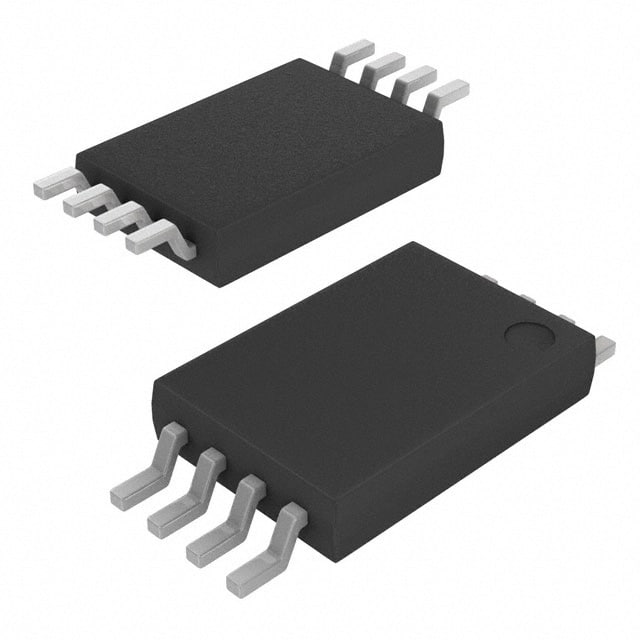UCC2977PWG4
Product Overview
Category
UCC2977PWG4 belongs to the category of integrated circuits (ICs) and specifically falls under the power management ICs.
Use
This product is primarily used for power management applications, providing control and regulation of power in various electronic systems.
Characteristics
- Integrated circuit
- Power management functionality
- High efficiency
- Compact size
- Wide operating voltage range
Package
UCC2977PWG4 is available in a small-sized package, known as PowerPAD™ MSOP. This package offers excellent thermal performance and ease of mounting on printed circuit boards.
Essence
The essence of UCC2977PWG4 lies in its ability to efficiently manage and regulate power in electronic systems, ensuring stable and reliable operation.
Packaging/Quantity
This product is typically sold in reels or tubes, with each reel containing a specific quantity of UCC2977PWG4 ICs. The exact quantity may vary depending on the manufacturer and distributor.
Specifications
- Input Voltage Range: 2.25V to 18V
- Output Voltage Range: 0.6V to 5.5V
- Maximum Output Current: 3A
- Operating Temperature Range: -40°C to +125°C
- Switching Frequency: Up to 1MHz
- Control Interface: PWM (Pulse Width Modulation)
- Protection Features: Overcurrent protection, overvoltage protection, undervoltage lockout
Detailed Pin Configuration
The UCC2977PWG4 IC has the following pin configuration:
- VIN: Input voltage pin
- GND: Ground pin
- VCC: Supply voltage pin
- COMP: Compensation pin for feedback control loop
- FB: Feedback pin for output voltage regulation
- EN: Enable pin for turning the IC on/off
- PGND: Power ground pin
- SW: Switching node pin for connecting to the power switch
Functional Features
- High-efficiency power management
- Wide input voltage range for versatile applications
- Precise output voltage regulation
- Protection against overcurrent and overvoltage conditions
- Undervoltage lockout for safe operation
- PWM control interface for flexible system integration
Advantages and Disadvantages
Advantages
- Compact size allows for space-efficient designs
- High efficiency leads to reduced power consumption
- Wide operating voltage range enables compatibility with various systems
- Comprehensive protection features enhance system reliability
- PWM control interface offers flexibility in system integration
Disadvantages
- Limited maximum output current may not be suitable for high-power applications
- Requires external components for complete power management solution
- Higher cost compared to simpler power management solutions
Working Principles
UCC2977PWG4 operates based on a pulse width modulation (PWM) control scheme. It regulates the output voltage by adjusting the duty cycle of the PWM signal, which controls the power switch connected to the load. The feedback loop compares the actual output voltage with the desired value and adjusts the duty cycle accordingly to maintain stable voltage regulation.
Detailed Application Field Plans
UCC2977PWG4 finds application in various fields, including but not limited to: - Power supplies for consumer electronics - Industrial automation systems - Telecommunications equipment - Automotive electronics - Renewable energy systems
Detailed and Complete Alternative Models
Some alternative models that offer similar functionality to UCC2977PWG4 include: - LM2596: A popular buck converter IC with adjustable output voltage and high efficiency. - LT8610: A synchronous buck regulator IC with wide input voltage range and high switching frequency. - TPS54332: A step-down converter IC with integrated power MOSFETs and advanced protection features.
These alternative models can be considered based on specific application requirements and design constraints.
Word count: 529 words
Lista 10 Vanliga frågor och svar relaterade till tillämpningen av UCC2977PWG4 i tekniska lösningar
Sure! Here are 10 common questions and answers related to the application of UCC2977PWG4 in technical solutions:
Q: What is UCC2977PWG4? A: UCC2977PWG4 is a high-performance, dual-channel gate driver IC designed for driving power MOSFETs and IGBTs in various applications.
Q: What are the key features of UCC2977PWG4? A: Some key features include high peak output current, wide input voltage range, integrated bootstrap diode, and protection features like undervoltage lockout and thermal shutdown.
Q: What are the typical applications of UCC2977PWG4? A: UCC2977PWG4 is commonly used in motor drives, solar inverters, UPS systems, industrial automation, and other power electronics applications.
Q: How does UCC2977PWG4 improve system efficiency? A: UCC2977PWG4 offers low propagation delay and shoot-through prevention, which helps minimize power losses and improve overall system efficiency.
Q: Can UCC2977PWG4 handle high-frequency switching? A: Yes, UCC2977PWG4 is designed to support high-frequency switching up to several hundred kilohertz, making it suitable for modern power electronics applications.
Q: Does UCC2977PWG4 have built-in protection features? A: Yes, UCC2977PWG4 includes undervoltage lockout, overcurrent protection, and thermal shutdown to safeguard against fault conditions and ensure reliable operation.
Q: What is the maximum output current of UCC2977PWG4? A: UCC2977PWG4 can deliver a peak output current of up to 4A, making it capable of driving a wide range of power MOSFETs and IGBTs.
Q: Can UCC2977PWG4 operate at high temperatures? A: Yes, UCC2977PWG4 has a wide operating temperature range and is designed to withstand high-temperature environments typically found in industrial applications.
Q: Does UCC2977PWG4 require an external bootstrap diode? A: No, UCC2977PWG4 integrates a bootstrap diode, simplifying the design and reducing component count.
Q: Is UCC2977PWG4 available in different package options? A: Yes, UCC2977PWG4 is available in a small-footprint PowerPAD™ package, which helps optimize PCB layout and thermal performance.
Please note that these answers are general and may vary depending on specific application requirements and datasheet specifications.


